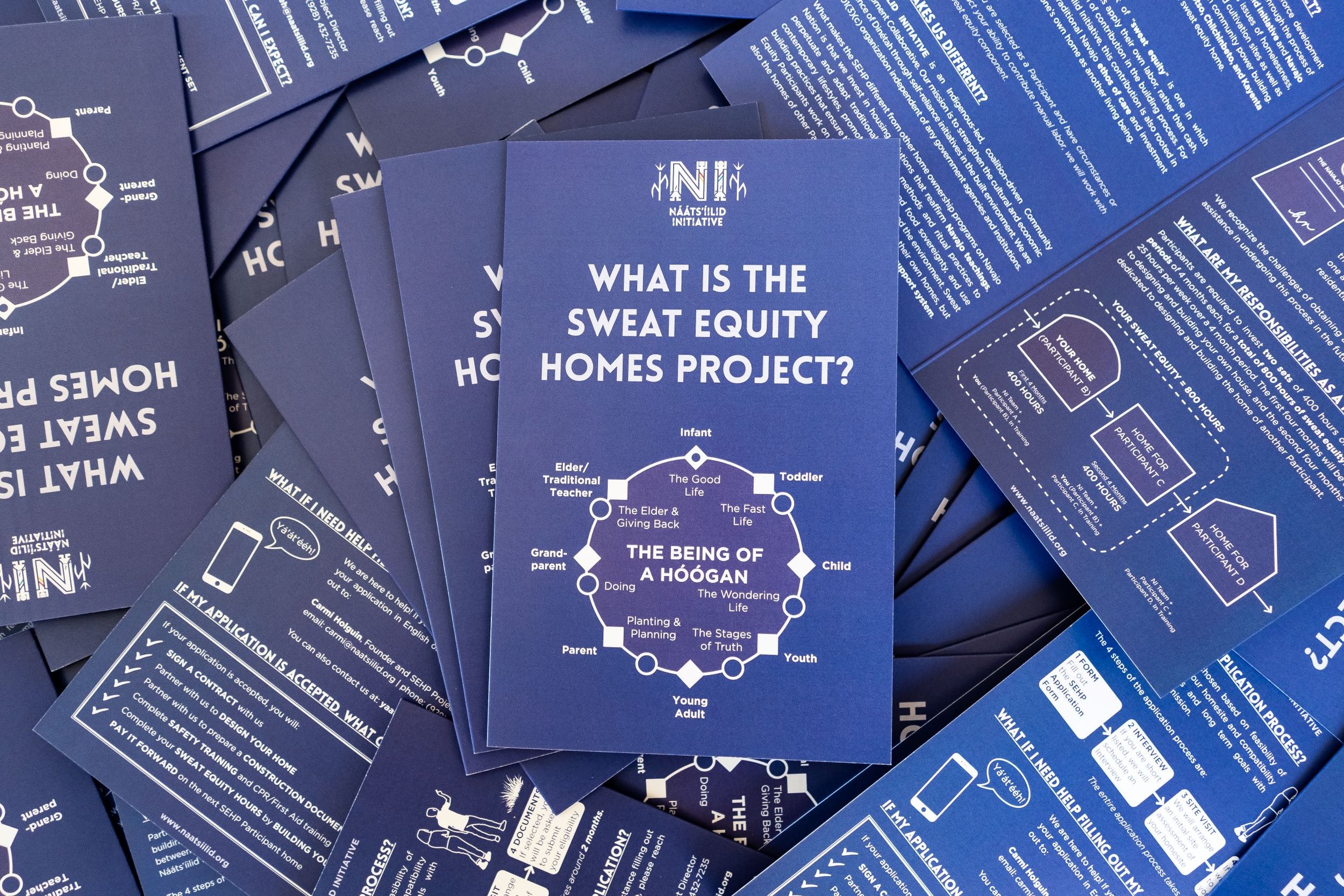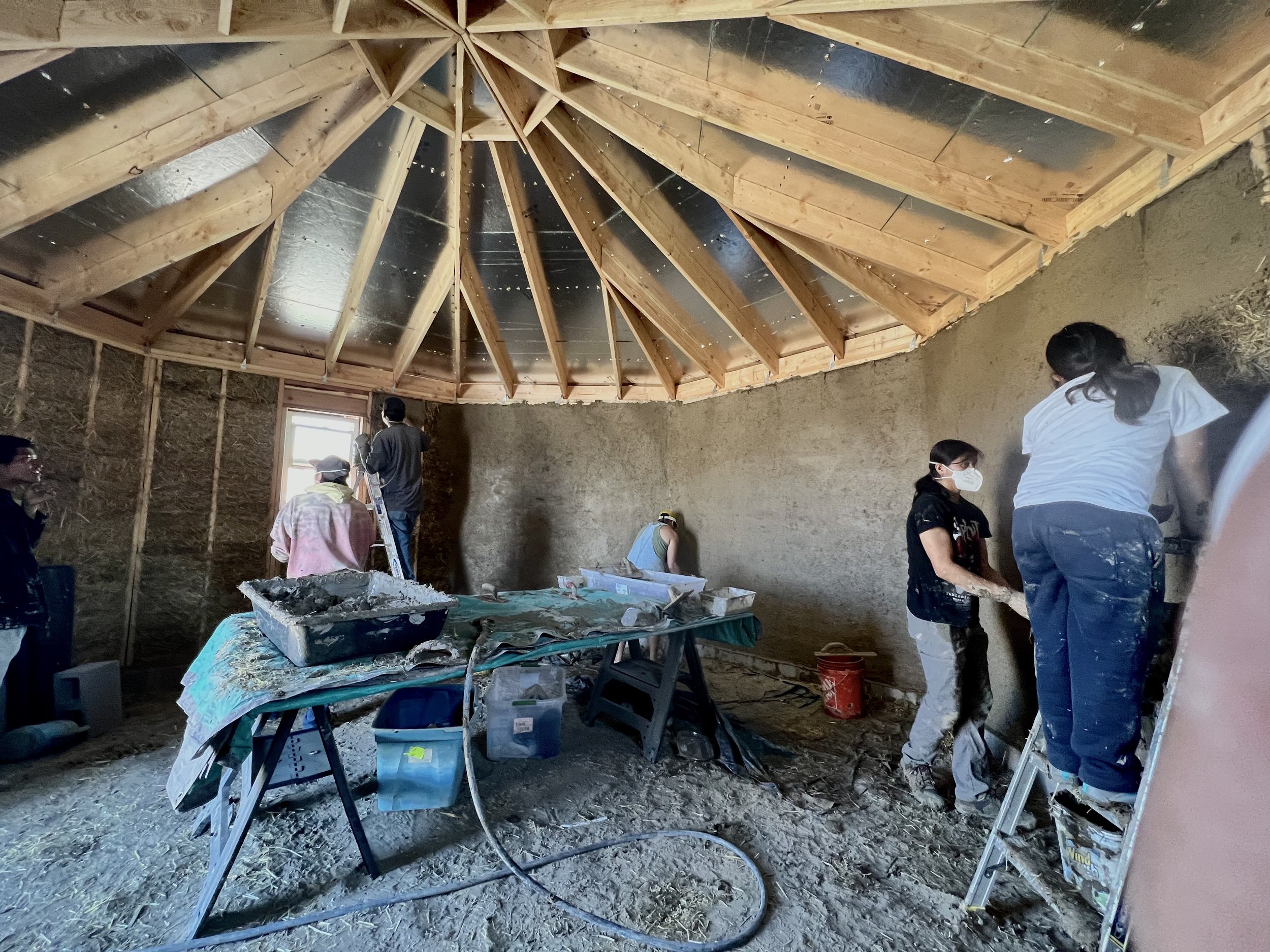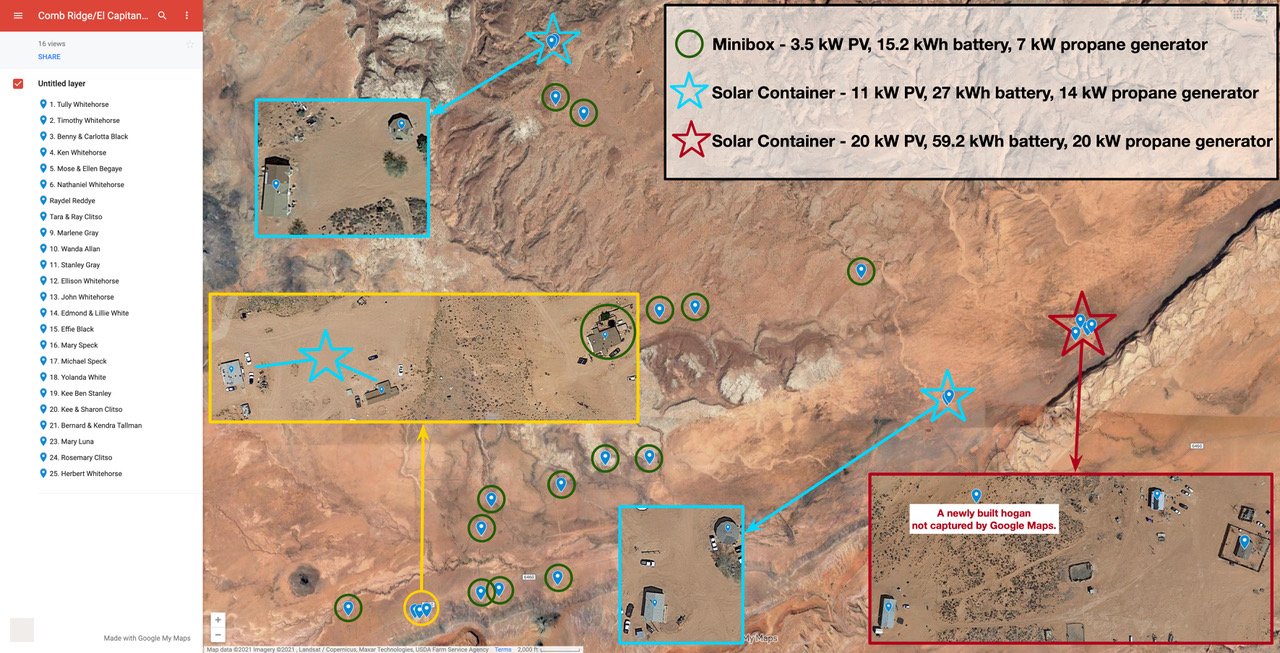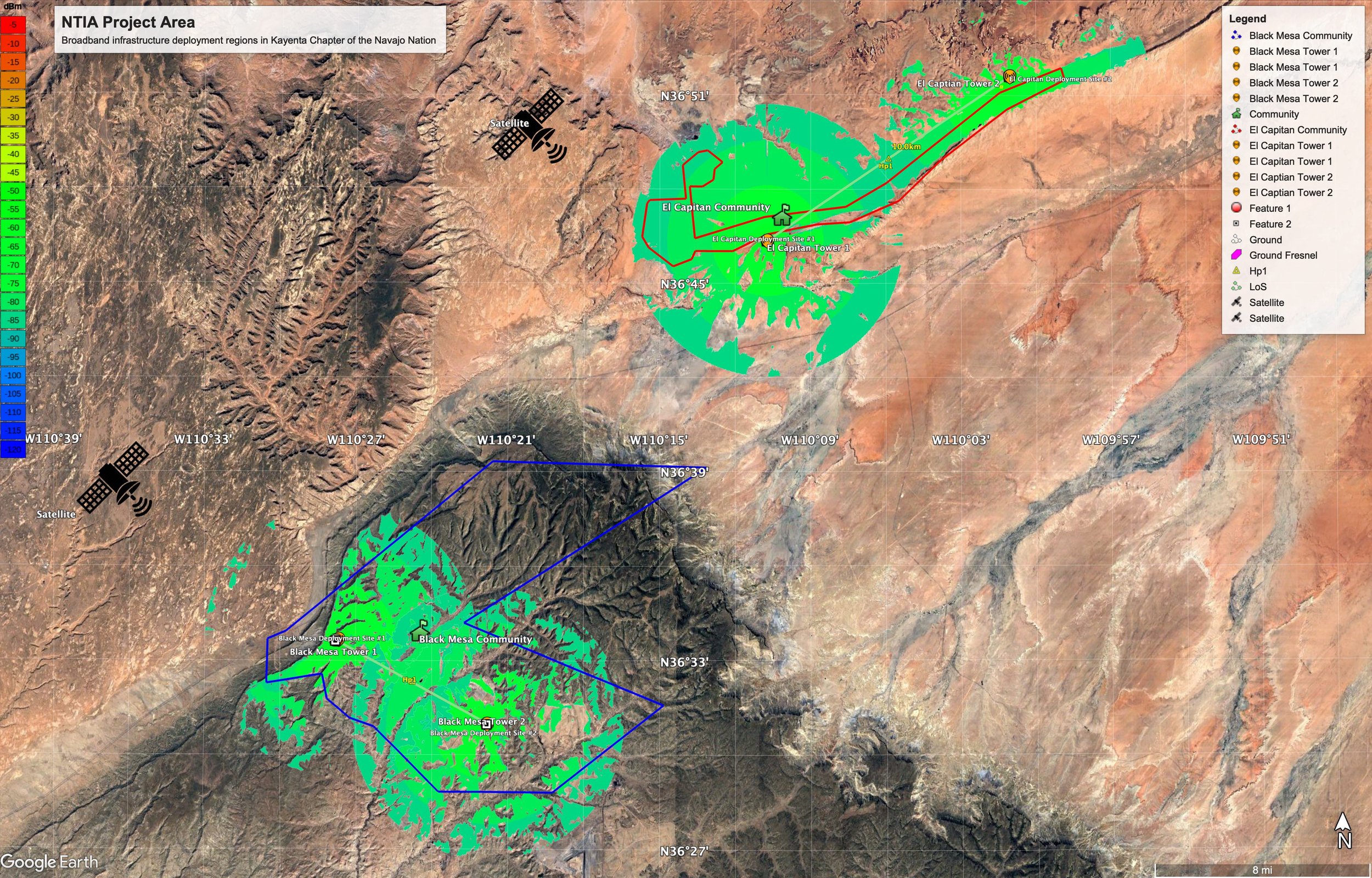OUR PROJECTS
THe Sweat Equity Homes Project
Project Funder: NDN Collective Community Self-Determination Grant
Kayenta, Dennehotso, and Chilchinbeto, AZ | 2021-Ongoing
THE SWEAT EQUITY HOMES PROJECT (SEHP) was designed by Nááts'íilid Initiative in partnership with Navajo Nation City Council to address issues of homelessness, overcrowding, access to water, electricity, and food cultivation sites through community power building. Our goal is to promote a housing solution that reaffirms traditional Navajo teaching and promotes growing food, cooking, storytelling, and holding ceremonies to adapt to contemporary lifestyles. We foresee gathering areas within homes that offer space for children to do school work as well as develop traditional relations to animals and landscape. Elders and collective rituals in these spaces have historically provided rich communal context as antidotes to communal pride. Our vision includes the Indigenous belief that the house is an animate being, nurtured and cared for by the families. We are after an architecture not reproducing a style, but integrating Navajo nomenclature, reviving pre-colonial construction methods involving elders, ritual practices of harvesting materials and techniques of building, and environmentally conscious building practices. The hope is to enrich the efficiency driven framework of contemporary modes of construction by braiding Navajo systems of making into it, which has never separated health and spirituality from building.
Currently in its pilot year, the program is building two single-family houses, including supporting infrastructure and amenities, by offering potential new homeowners financing, design, permitting, construction, and management support. We plan to expand to build four to eight houses in subsequent years. While THE SWEAT EQUITY HOMES PROJECT involves an exchange of paid labor for housing in its initial two year phase, our concept of sweat equity holds much deeper meaning--one that is rooted in the traditional Navajo ethos of care and investment in one’s own home as another living being.
We are not currently accepting applications. Please check back at a later date.
LEARN MORE - “WHAT IS THE SWEAT EQUITY HOMES PROJECT?” INFO PACKET
hwalking with Dinétah
Project Funder: Monument Lab Re:Generation Grant
Kayenta, Dennehotso, and Chilchinbeto | 2021-Ongoing
WALKING WITH DINÉTAH is a community art and trail walking initiative dedicated to co-creating strategies for cultural resilience and healing through spatialized oral histories, memory work, mapmaking, and participatory art—in other words, through Hózhó náhásdlíí’, or “walking in beauty.” We will create a living digital archive in the form of a regional map through collecting narratives from elders, and asset mapping with residents of Chilchinbeto, Kayenta, and Dennehotso. The research will generate an Indigenous trail in Chilchinbeto through embedding digitally recorded knowledge, place-based Indigenous art, mnemonic installations, and local vegetation that will attract wildlife.
The project will reveal Chilchinbeto, Dennehotso, and Kayenta—and indeed all Indigenous places—not as empty, but, as elders say, “already made,” reconnecting Diné youth with traditional ways and revitalizing their pride. The regional plan will reestablish the continuity between the placemaking strategies of basket makers, ancestral Puebolans, and Diné. Original storytelling and art made in its reflection will emphasize the land as an ecosystem and a place, and not as an abstract space. The ecosystem will continue to host humans among yucca, Indian rice grass, spiny lizards, and ferruginous hawks. Our exercise in counter-mapping will become a tool of empowerment. It will give power back to localities to control their narratives. It will shift public consciousness and push reparations-driven planning and policy. The digital interface will encourage conversations on Indigenous ways of knowing that holds a mirror to the knowledge economy of settler-colonialism. Finally, it will create a connection between Indigenous people and diasporic communities who share the historical trauma of colonization.
Hoosh’ii and íí∤ah
Revitalizing Diné PlaceKnowing and PlaceMaking
Project Funder: Mellon Foundation’s Humanities in Place program
Navajo Nation | 2022-2025
Hoosh’ii’ and ‘íí∤ah: Revitalizing Diné PlaceKnowing and PlaceMaking envisions integrating Nihok’aa Diyin Dine’é (Navajo) teachings and building practices as well as fostering interpersonal connections between the place and the place makers. These collective ideas are fundamental to our cooperative approach to community development and participatory design. We cultivate reciprocity and connection with the land and build community power through Nihok’aa Diyin Dine’é knowledge systems and building skills already available in the community. Activities of the Project involve:
Gathering and cataloging place-based knowledge on the protocols of harvesting materials in the Colorado Plateau region, techniques of construction, best practices for participatory design, seasonal rituals of blessing a home in the Great Basin, and traditional stories of caring for home, animals, water, and land through hosting, documenting, and synthesizing a series of collaborative workshops, gatherings, and oral history interviews. A Nihok’aa Diyin Dine’é research fellow will be guided by the instructions from traditional knowledge keepers in order to parse out what can be published and what must be kept close to heart by Nihok’aa Diyin Dine’é youth and elders. These will be digitized, archived and published as a digital humanities project. This cumulative body of knowledge will craft and form retelling narratives, models, maps, and audio and video content in a public facing living archive.
Co-organizing cultural and kinesthetic educational programming in the form of 6-8 workshops per year with traditional construction builders to sustain these practices and vibrancy in the community for present and future generations. We aim to invite local elders who will teach community participants local building practices including earthen plastering, adobe building, cob oven construction, Indigenous approaches to water harvesting and resource/material gathering, and home maintenance and repair.
Co-developing and hosting the first of its kind consortium of allied organizations and institutions in the Southwestern region doing memory work in rural environment and affordable housing in Navajo Nation.
Providing architectural services to the three chapters on public interest design projects, space reorganization, and co-developing sharable designs for Indigenous communities. We aim to facilitate dialogues between varying stakeholders in the community to co-develop programming, co-generate designs and coordinate different partners.
If you are interested in partnering with us on a community project, please fill out this form
microgrid kayenta
Electrifying and Broadbanding the Comb Ridge/El Capitan Community in Kayenta Chapter of the Navajo Nation – A Resilient Solar-Based Autonomous Microgrid Solution
Project Funder: US Department of Energy
Kayenta, AZ | 2022-Ongoing
Led by the Kayenta Chapter of Navajo Nation and in partnership with the University of Utah, New Sun Road, Box Power, and Native Renewables, members of Nááts’íilid Initiative secured $1.2M funding from the US Department of Energy to bring reliable and clean electricity, as well as broadband connectivity, for 25 households in the Comb Ridge/El Capitan community in the Kayenta Chapter of Navajo Nation.
The team will leverage its team members’ commercially-proven products to establish a resilient, autonomous solar-based microgrid with the total solar generation capacity of 105.5 kW, total battery storage capacity of 398.2 kWh, and total backup propane generation capacity of 170 kW. The entire microgrid will adopt a hybrid centralized-decentralized configuration and is capable of providing 24/7 uninterrupted power and internet for the community. In the second year of the project, the developed microgrid will be tested and fine-tuned, and Diné people will be trained by team members for basic troubleshooting and repair.
The Navajo Nation envisions to sustainably use its lands to improve the quality of life for its residents by offering affordable electricity and stable internet connection. Having the solar-based microgrid established by this project, the Nation’s long-term vision can be soon achieved. While cost reduction is an obvious driver for this project, these technologies bring more than just a lower energy bill to these residents. Another goal of this project is to develop clean energy job skills and expertise among residents in the community. This project expects to create approximately 6 full-time temporary employee positions and 3 full-time positions to last the entire life of the equipment.
A Resilient Broadband Solution for Kayenta Chapter of the Navajo Nation
Project Funder: National Telecommunications and Information Administration
Project Partners: The Navajo Nation Tribal Government, Kayenta Chapter, University of Utah, New Sun Road, Native Network
Kayenta, AZ | 2022-Ongoing
With the partnership of Chapter government, the broadband and power infrastructure provider and the University of Utah, the National Telecommunications and Information Administration (NTIA) project aims to introduce high speed broadband connection at affordable costs to the community in Comb Ridge/El Capitan and Black Mesa regions (with 120 and 100 multi-family houses) located in the Kayenta Chapter of the Navajo Nation. The deployed broadband infrastructure will include fiber connection, microwave transport network, router and ethernet switches, and a firewall. The project will be powered by hybrid power solution with new power lines and a solar-based alternative power system for the remote site. The project is expected to deliver a reliable and resilient broadband network that offers internet connectivity, further promoting resilient economic development, education, telehealth, and well-being of the targeted areas.








